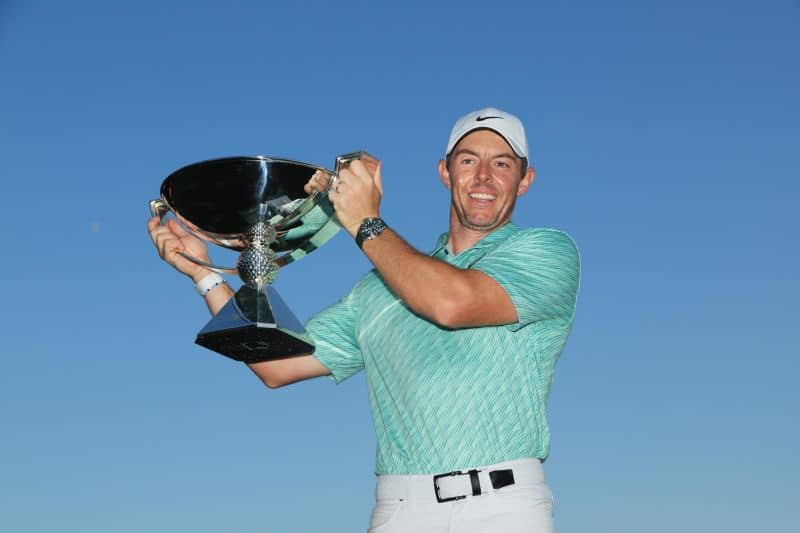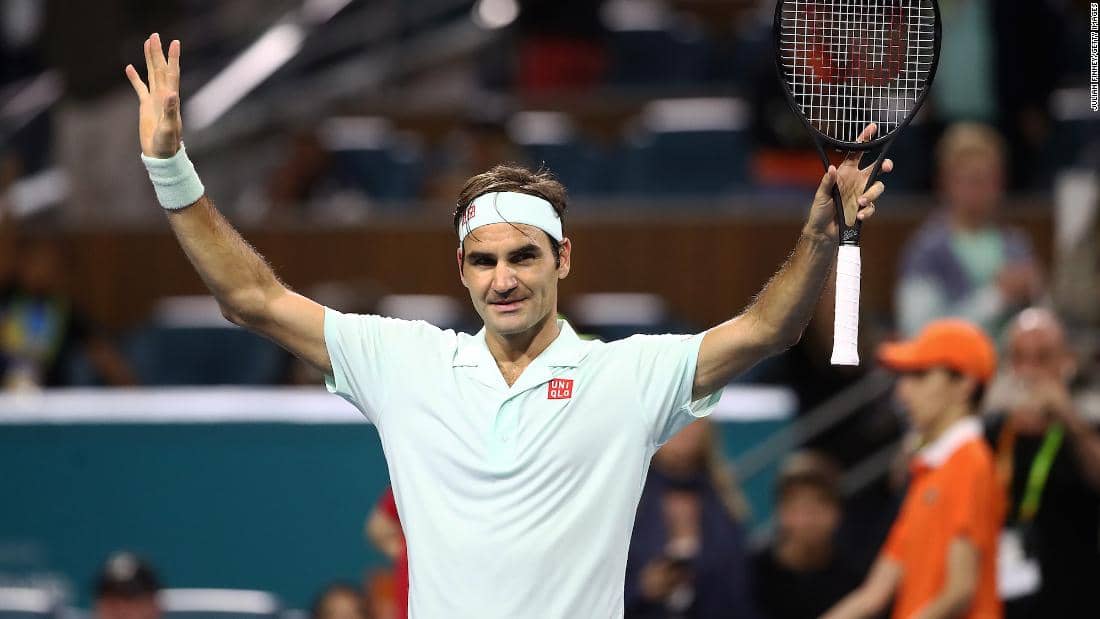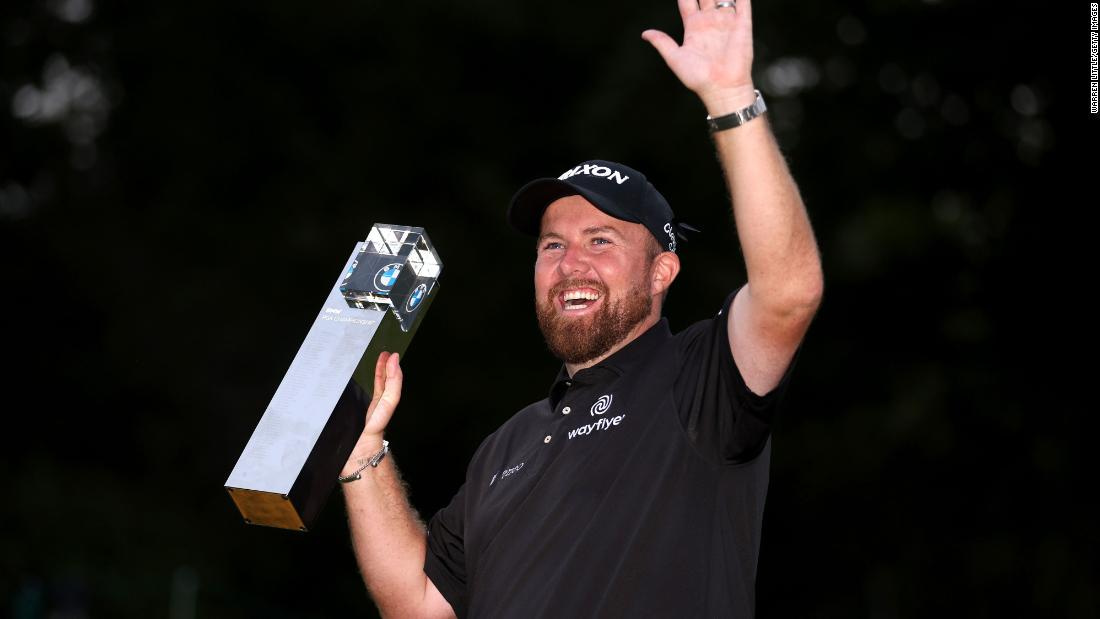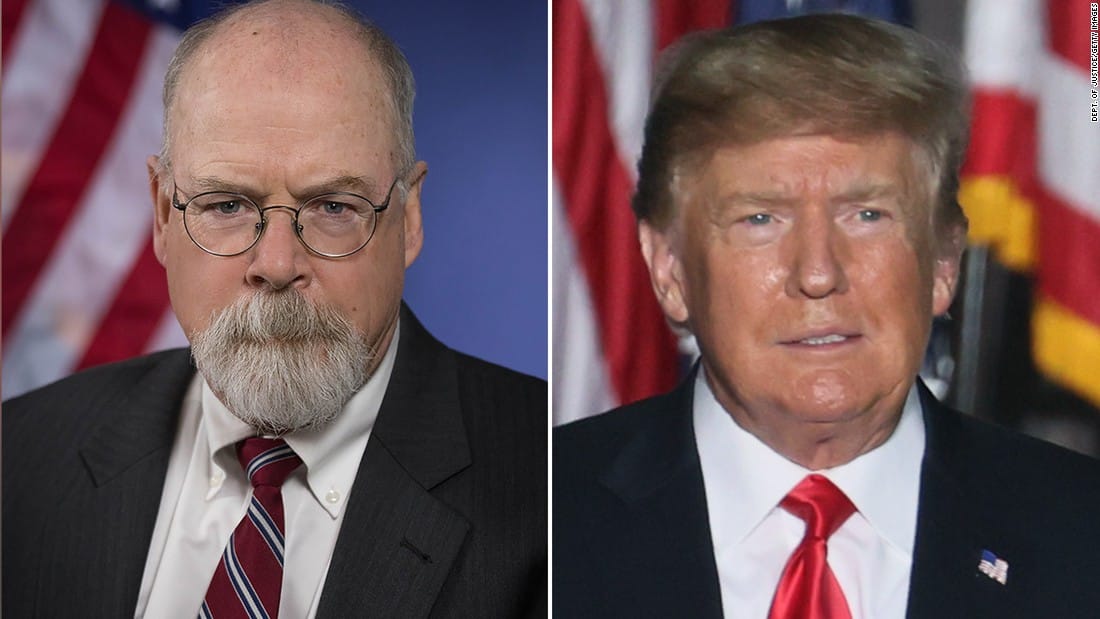CNN — The beers were well and truly on Pádraig Harrington on Sunday. Surging towards an emphatic victory at the Charles Schwab Cup Championship – the PGA Tour Champions season finale –

Chris Kirk speaks to CNN after first PGA Tour win in 8 years
American golfer Chris Kirk had won four times on the PGA Tour, but in 2019, he stepped away to deal with his crippling depression and alcohol abuse issues. Last Sunday, he won a playoff at the Honda Classic in Florida and told CNN about his extraordinary journey.
Don't Miss
CNN — Novak Djokovic cruised through to the US Open final after a dominant 6-3 6-2 7-6 (7-4) win against
CNN — Buffalo Bills player Damar Hamlin has been discharged from a Buffalo medical center, his club said Wednesday, after
CNN — In 2013, a 14-year-old Alex Fitzpatrick caddied his older brother Matt to victory at the US Amateur Championship
CNN
—
In 2013, a 14-year-old Alex Fitzpatrick caddied his older brother Matt to victory at the US Amateur Championship in Brookline, a win that secured the champion an exemption for the following year’s US Open.
The rest is history: Matt Fizpatrick would return to the same site in 2022 to clinch the major, announcing his arrival as England’s premier golfing talent.
Now, the world No. 8 has the chance to return a favor to his younger sibling.
On Thursday, the Fitzpatrick brothers will pair for the Zurich Classic of New Orleans, a PGA Tour event that will see 80 two-player teams battle it out at TPC Louisiana for a split of the $2,398,000 winner’s purse.
The triumphant pair on Sunday will also receive a two-year exemption on the PGA Tour. Though not a motivation for the field’s elite names like Fitzpatrick, for his 24-year-old younger brother – ranked 705th in the world and forging his path on the Challenge Tour – it could be life-changing.
“That would be incredible for him, there’s no doubt about that,” Fitzpatrick told CNN Sport’s Don Riddell.
“We know what’s at stake and we know what possibilities there are if he does well and, hopefully, we can do that.”
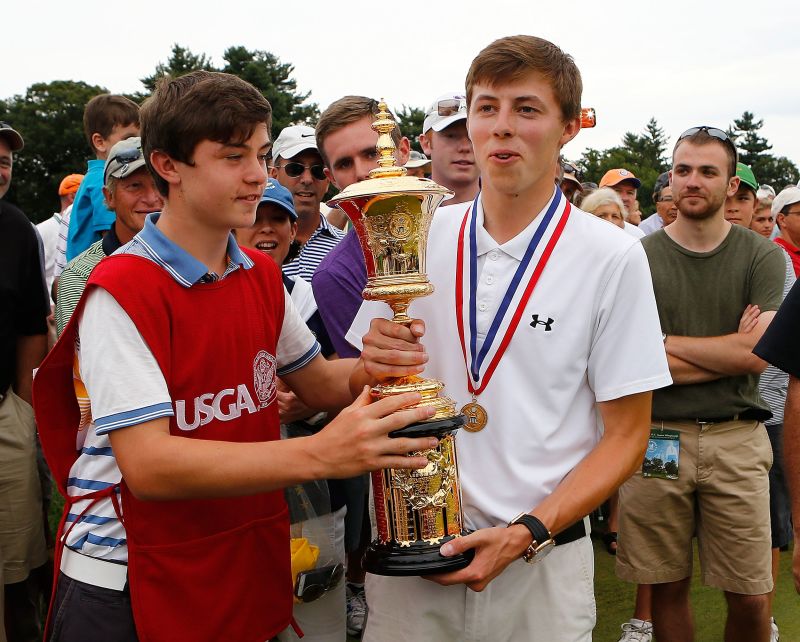
A few months after Fitzpatrick’s dramatic US Open triumph, he found himself pitted in the same field as his younger sibling at the Italian Open in Rome.
After the second round, the junior Fitzpatrick led the major champion in average driving distance by 0.36 yards – a slender gap, yes, but enough to warrant a jab via text. The reply – shared via Fitzpatrick’s Instagram – showed a screenshot of the US Open winner’s name atop the leaderboard, with his brother’s tied-18th position included for good measure.
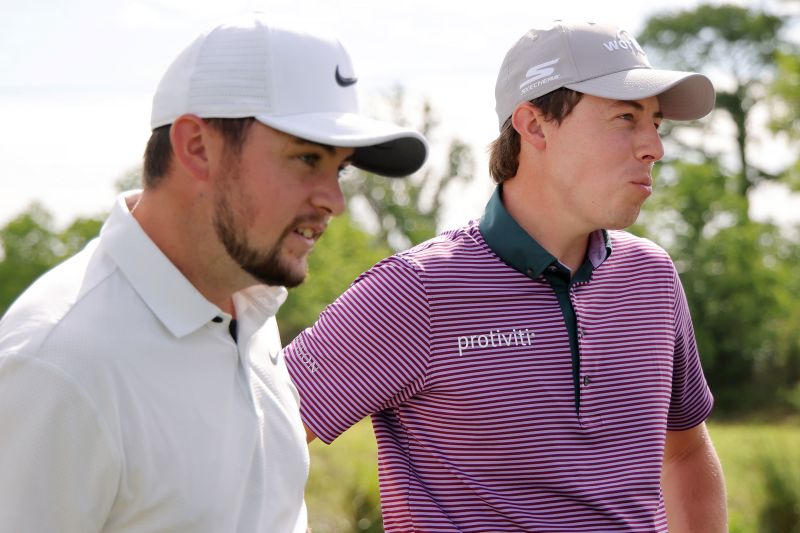
Yet beneath the cheap shots, it’s all brotherly love, and the pair gel well on the course despite contrasting styles.
“Our games are pretty opposite,” the elder Fitzpatrick said. “I’m a good driver, he’s a good iron player. He’s a good short game and I’m a good putter.
“He wants to do as well as he can, of course he does, but for me his path is probably going to be a little bit different than mine. The golf world is very different from when I started to when he’s playing now so he’s going to focus on the Challenge Tour probably, he’s excited for that.
“Hopefully, he can follow in my footsteps.”
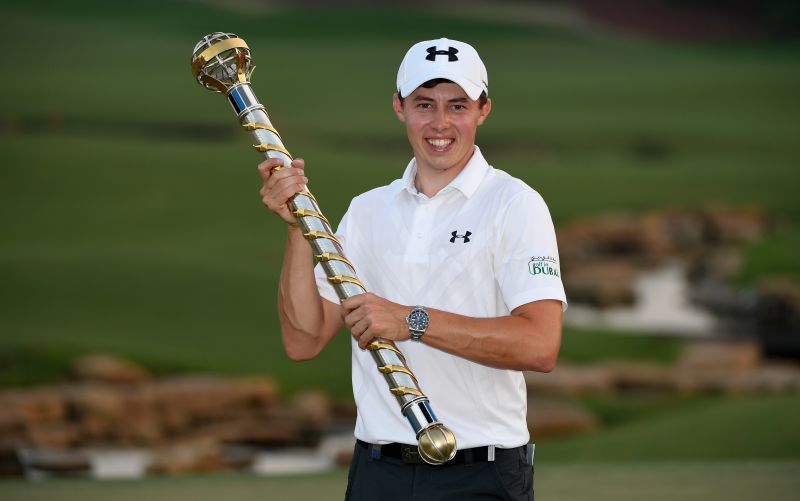
Matt Fitzpatrick’s perfect day? Tuna & Augusta
They will be some tough footsteps to follow.
Triumph at the RBC Heritage on Sunday, sealed with a dramatic playoff win over three-time major champion Jordan Spieth, penned the latest glorious chapter in what has been an outstanding few years for Fitzpatrick.
The fact that the victory came at Hilton Head, a long-time holiday destination for the family from Sheffield, made it even more special, as the 28-year-old realized a childhood dream of lifting silverware on the Harbour Town course.
“Moments like that, you wish time travel was real and you could go back and say, ‘This is what’s going happen in a few years,’” he said.
“I would have been amazed, it was always one that I wanted to win and it was very special to do it.”

And as if winning couldn’t have been any sweeter, it arrived in the face of overwhelmingly one-sided crowd support for home hero Spieth, with ‘U-S-A’ chants soundtracking much of the deciding playoff holes.
Spieth gestured to fans for quiet, but Fitzpatrick relished his leading role as a villain.
“It was great … I definitely enjoyed being in it,” he said.
“I wouldn’t say I’ve played in that atmosphere too often, but it’s certainly nice to perform under that pressure and I think that’s what made it mean so much as well.”
Fitzpatrick is looking forward to a role reversal of crowd bias when Italy hosts the Ryder Cup for the first time in September.
Rome’s Marco Simone Golf and Country Club will be the stage for what Team Europe hopes will be a decisive rebound after a bruising defeat at the hands of their American rivals at Whistling Straits in 2021.
Fitzpatrick, a member of that team and the similarly defeated 2016 roster, is yet to win a singles match at the biennial tournament but would touch down in Rome a far more accomplished player should he be selected.
“I’d really like to be one of the top players that week and play really well,” he said.
“I’m just excited for that opportunity and I think that’s what’s really important is to first make the team, and then look forward to it, enjoy it, and go out there and try to win some points for Europe.”
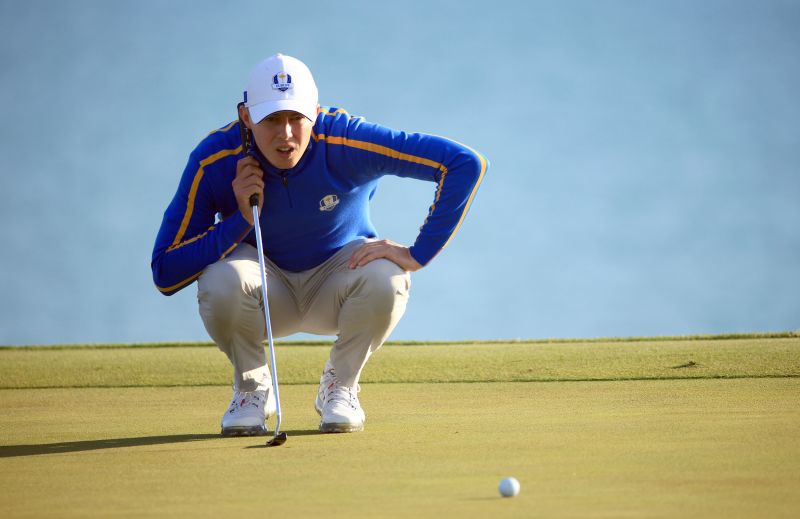
His other main aim for 2023 is to add another major to his trophy cabinet, no easy feat with the caliber of names chasing the same goal.
A tied-10th finish at The Masters signaled a strong start to the major season for the Englishman, who finished eight strokes adrift of dominant winner Jon Rahm.
The Spaniard’s second major title consolidated his reputation alongside Scottie Scheffler and Rory McIlroy in the so-called ‘big-three’ atop the rankings. Yet Fitzpatrick – dubbed the hardest-working golfer on the PGA Tour – has no intention of accepting his place in the food chain.
“I don’t wanna just sit back and be like, ‘They’re all too good for me and I’m just happy with where I am.’ That’s not me as a person,” Fitzpatrick said.
“I’m constantly looking at ways to improve and get better, and that’s what’s really important is to keep pushing myself and try and catch them up.”
Don't Miss
Chris Kirk speaks to CNN after first PGA Tour win in 8 years American golfer Chris Kirk had won four
CNN — Rory McIlroy became the first golfer to lift the FedEx Cup three times after completing a sensational comeback
“I am 41 years old. I have played more than 1500 matches over 24 years. Tennis has treated me more
CNN
—
There’s a lot you can do in just under three minutes.
You can listen to “Speed of Life” by David Bowie, you can re-live Usain Bolt’s 100m world record run 18 times, and, if you are an exceptionally talented Premier League footballer, you can even squeeze in a hat-trick.
Alternatively, you can watch a golfer hit a single ball.
That was the situation one fan found himself in at the RBC Heritage last month, as he fired up the stopwatch on his iPhone to time Patrick Cantlay lining up a shot during the final round of the PGA Tour event.
When the American eventually swung, the clock was ticking past two minutes and 50 seconds.
In Cantlay’s defense, the video wasn’t without caveats. It was an awkward looking lie, the ball lodged in the rough behind a tree, and – with the timer at 90 seconds when first shown – it is impossible to know exactly how long the world No. 4 spent over his shot.
The problem for Cantlay, however, is that it was not an isolated incident – nor the most disgruntled reaction.
Footage of the golfer spending close to a minute standing over a four-foot putt that same day quickly found its way to the satirical side of the sport’s Twitter community, which spliced the pictures with the closing scenes of the golf comedy classic “Happy Gilmore.”
The titular character calculated and sunk his winning championship putt – one that bounced off the windshield of a car and careened leisurely around the debris of a collapsed tower – before Cantlay holed his effort, a tweet from parody account Tour Golf showed.
A week prior during the deciding round of The Masters, Cantlay had been playing ahead of the leading group, Brooks Koepka and soon-to-be champion Jon Rahm.
Koepka, whose frustrations with slow play lit the touchpaper of a fiery feud with rival Bryson DeChambeau in 2019, made no secret of his grievances.
“The group in front of us were brutally slow,” Koepka told reporters.
“Jon went to the bathroom like seven times during the round, and we were still waiting.”
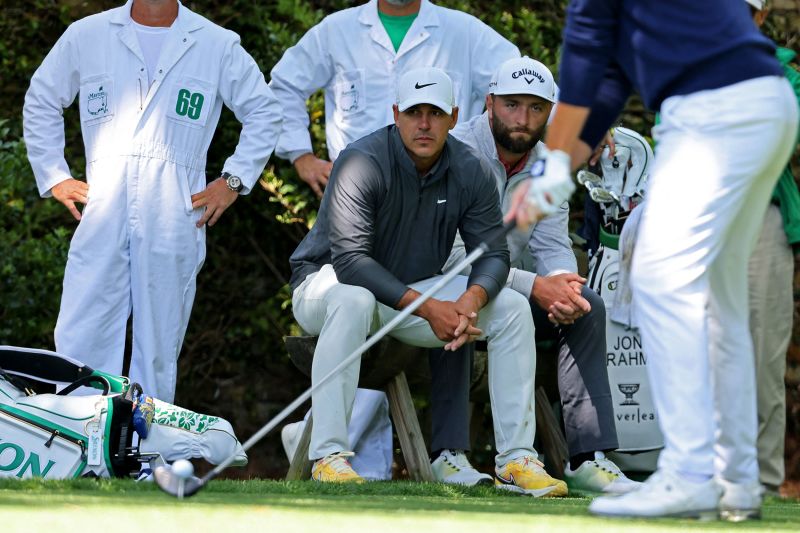
Yet Koepka’s comments paled in comparison to those made by one of Cantlay’s playing partners during that decisive round at the RBC Heritage, Matt Fitzpatrick. The Englishman went on to lift the title, seeing off Jordan Spieth in a playoff, but did not leave Hilton Head fully satisfied.
For Fitzpatrick, regarded as one of the fastest players on the tour, a three-ball round should never take longer than four and a half hours. To get near that is a “disgrace,” to go well past it is “truly appalling.”
“The problem is this conversation has gone on for years and years and years, and no one has ever done anything, so I feel it’s almost a waste of time talking about it,” Fitzpatrick told Sky Sports.
“I have strong opinions, but no one’s going to do anything about it. It’s like hitting your head against a brick wall. No one ever gets penalized.
“I think it’s a real issue, way more needs to be done. The thing is I really like referees over here, they are great people, but I did not see a single ref all day. There were a few shots we were waiting and I don’t understand where they are all hiding. It does become frustrating when you are waiting so long.”
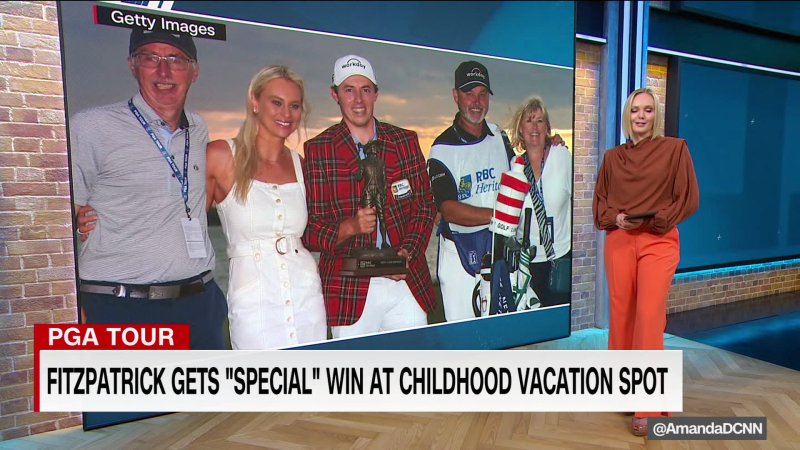
1-on-1 with newly minted PGA Tour winner Matt Fitzpatrick
Further complaints came from beyond the confines of the PGA Tour.
Responding to the video of the fan timing Cantlay on Twitter, former LPGA pro Anya Alvarez labeled it “atrocious.”
“What is the point of having a pace of play rule if you’re going to allow this? I was penalized on LPGA for slow play … and it forced me to speed up,” Alvarez said.
And even the game’s greatest are weighing in, with Jack Nicklaus and Annika Sörenstam both admitting that the PGA Tour have a problem on their hands.
“It’s got to be equitable, but they need to make an example and stay with it,” Nicklaus told Golfweek ahead of the PGA Tour of Champions’ Greats of Golf event on Saturday.
“It’s not very pleasant to watch somebody stand over the ball for half an hour.”
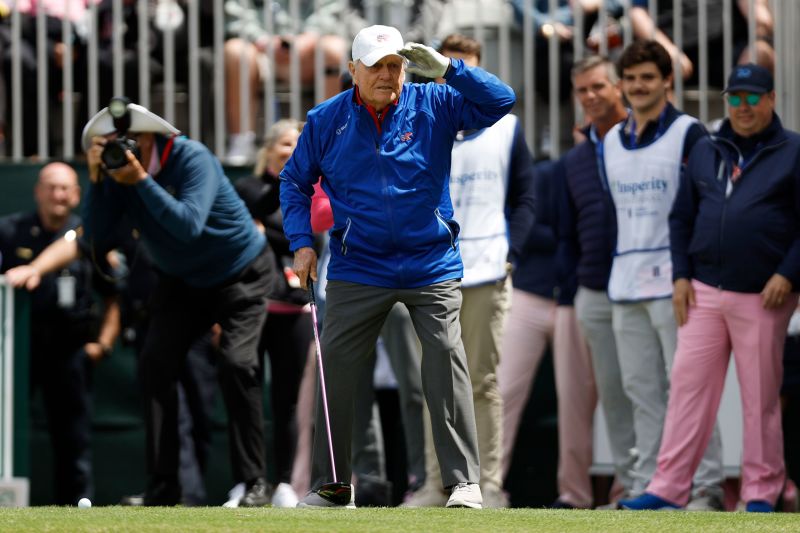
Sörenstam added: “Nobody enjoys it and it’s not fair, we’re running out of time. Time is a precious commodity, so I think start at the very beginning and teach them to hit when you’re ready and go.
“The more we think, the more complicated it gets, so just hit and go.”
For Golf Digest analysts Joel Beall, Alex Myers and Luke Kerr-Dineen, there was a general consensus for Fitzpatrick’s outburst: blunt, but true.
As well as having a negative “ripple effect” on groups behind the slow player – akin to the chain reaction of braking causing traffic jams on a highway – it could also lead to the Tour losing valuable eyes.
“Pace of play is an issue and has been for years,” Beall told CNN Sport.
“What’s changed is that sports leagues are recognizing their consumers don’t have an infinite amount of time to devote to their fandoms and are adjusting accordingly. That golf hasn’t has amplified the existing problem.”
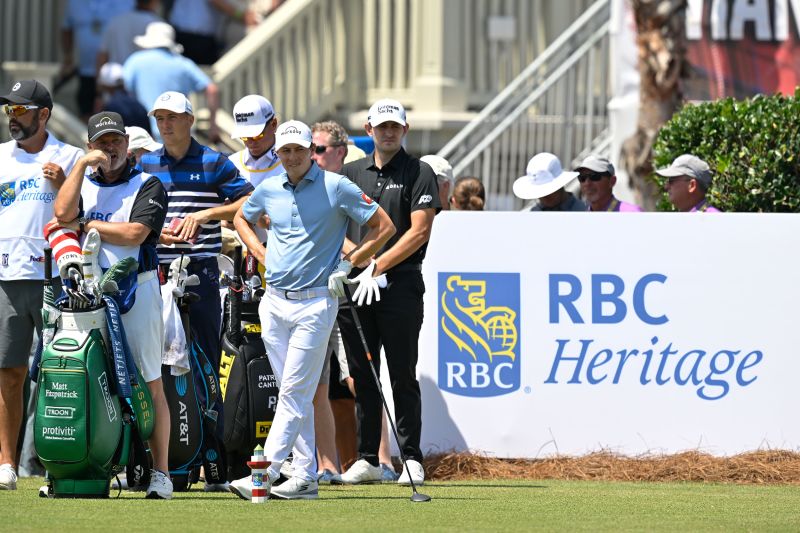
However, Cantlay seems unfazed. After dropping in a sensational hole-in-one during the second round of the RBC Heritage, the American tweeted video of his effort with the caption: “Playing faster!”
Quizzed on Fitzpatrick’s criticisms ahead of the following week’s Zurich Classic, Cantlay said his tenure on the PGA Tour’s Player Advisory Council (PAC) had shown him that round times had been relatively similar across the last decade.
“So trying to speed it up, I’d be curious to know how they’d want to do that,” Cantlay told reporters.
“I played the last two tournaments, and my group hasn’t been warned at all … I don’t know how you would want the groups that I’ve been in to play faster when our groups are in position and can’t go faster because the group in front of us is right in front of us.
“I’m definitely slower than average, have been my whole career. I definitely take my time … I haven’t had anybody come up to me or talk to me, but I’d be perfectly happy to talk to them about it.”
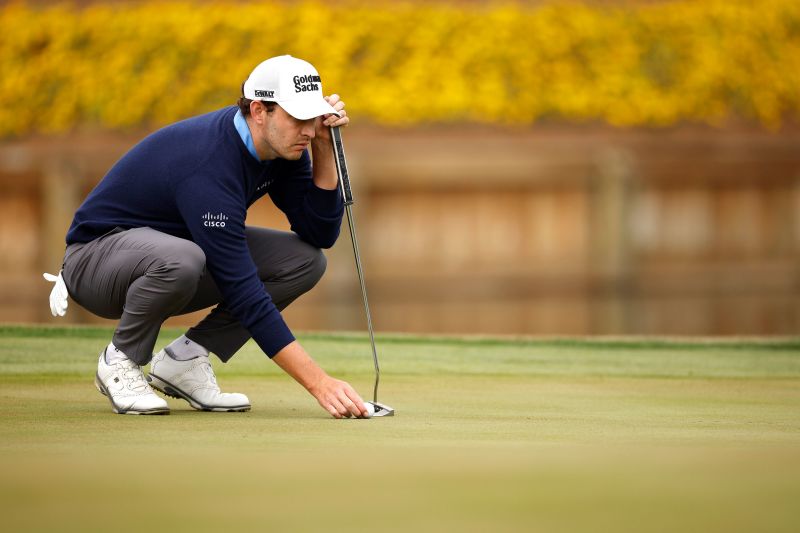
Cantlay was speaking alongside fellow American Xander Schauffele, who defended his compatriot.
“All the things that have happened as of late have all been within the guidelines of the Tour and what’s supposed to happen,” Schauffele said.
“No one’s been penalized for slow play or anything of that nature, so we’re all operating within the framework of what the Tour gives us. If enough people complain or if enough Tour pros complain, that’s something the Tour needs to address to either make it faster or change the time par.
“We’re not playing like the local muni [municipal course] that the average Joe compares our time par to – we’re playing for a couple million. If you’re going to spend an extra minute to make sure you put yourself in the right spot, we’re going to do it.”
Ironically, the PGA Tour’s Tournament Regulations handbook spends a lot of time on pace of play guidelines.
An entire chapter dedicated to the issue begins by citing the R&A and USGA’s Rules of Golf guidance that “a round of golf is meant to be played at a prompt pace.” That pace is set at 40 seconds to play a stroke, with an extra 10 seconds afforded under various circumstances, such as the first player to play a shot on a par-3 hole or on the green respectively.
“The player should usually be able to play more quickly than that and is encouraged to do so,” the guidelines state, with golfers that exceed 40 seconds – AKA “bad time” – “informed as soon as practicable” by a tournament official.
While the first “bad time” offense goes unpunished, one- and two-stroke penalties are awarded for second and third violations respectively. A fourth offense during a round warrants disqualification. A second “bad time” equals a fine of $50,000, with a $20,000 fine for each subsequent offense.
Players that average more than 45 seconds a stroke over a 10-tournament rolling period are notified that they have been put on The Observation List, putting them under direct scrutiny from the Rules Committee. Observed golfers must play each stroke in under 60 seconds.
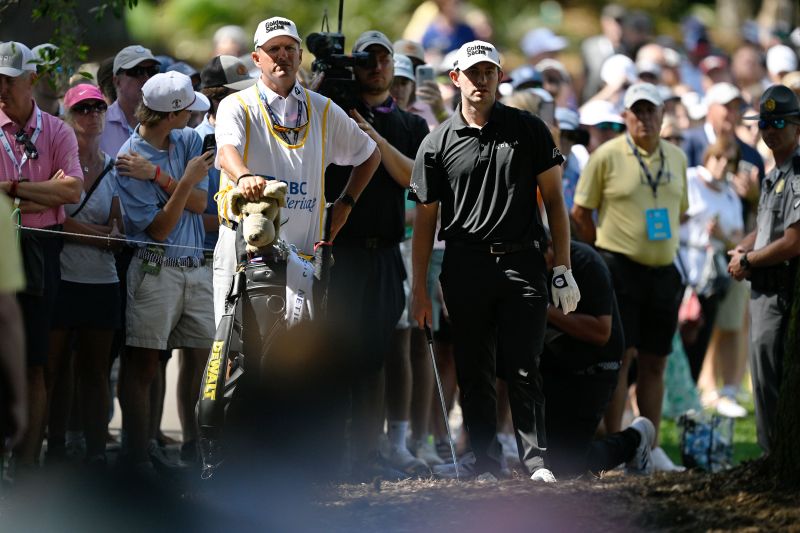
Should a player spend more than two minutes on a shot without a valid excuse, they are hit with an Excessive Shot Time. While the first offense goes unpunished, subsequent breaks put the golfer on The Observation List and are penalized by a monetary fine, starting at $10,000.
Both The Observation List and Excessive Shot Time were introduced by the PGA Tour in April 2020 to help speed up the pace of the game.
“You talk to players, read articles, hear from fans and what gets people, what gnaws at them, are these individual habits that people have,” then-PGA Tour chief of operations Tyler Dennis told Sky Sports.
“It’s seen as bad etiquette. It’s seen as a distraction, and we’re targeting those individual moments to help their fellow competitors and assist our media partners with presentation.
“We want to keep the focus where it should be: on world-class shot-making.”
So how do you solve a problem like slow play?
One idea, floated by PGA Tour golfer Michael Kim, is to name and shame via a monthly report of the slowest players.
This was a strategy tested by 2010 Ryder Cup winner Edoardo Molinari in 2019, as the Italian – having voiced his frustration with the pace of play on the European Tour – fulfilled his promise of sharing a spreadsheet documenting the slowest golfers on the Tour via Twitter.
Arguably the most commonly suggested solution, however, is the adoption of a shot clock, akin to those used in both the NBA and Major League Baseball (even if the latter’s recent introduction has led to considerable confusion among players).
The European Tour trialed the move at The Shot Clock Masters in 2018, dishing out red cards and one-shot penalties for violations, with players afforded two “time-outs” during each round.
However, Kerr-Dineen believes a golfing shot clock would be “too messy” to enforce. Instead, he says the PGA Tour should take inspiration from the American Junior Golf Association, where the introduction of “time par” checkpoints every three holes has helped speed up the youngsters’ game.
“Each group has to reach the next checkpoint in a specified amount of time. A slow group gets two warnings, then players get a one-stroke penalty for each bad time after that,” Kerr-Dineen explained.
“It’s a simple to understand, proven system – and it works.”
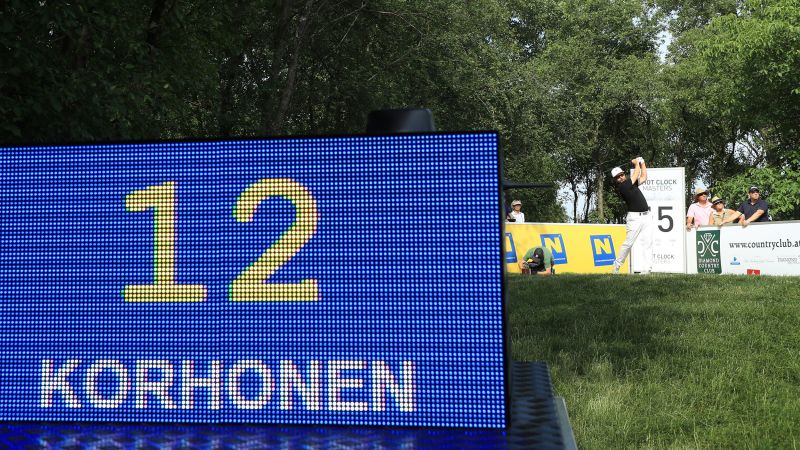
Golf Digest’s Beall sees some value in shot clocks and public calling outs, but squares responsibility with those that decide where to position the hole.
“Those in charge of setting up the course on a weekly basis continue to put pin locations in tough spots on greens that are faster than they’ve ever been,” Beall said.
“Put the pins in less severe spots and slow the greens down just a touch could go a ways in alleviating the issue.”
And for Myers, the answer has been staring the PGA Tour in the face all this time: simply enforce the existing rules.
It has been 28 years since the last slow play penalty was issued to an individual at a PGA Tour regular event, when Glen Daly received a one-stroke penalty at the 1995 Honda Classic.
“We hear all the time about so-and-so being put on the clock. What’s the point of doing that if you’re not going to take the next step?” Myers asked.
“Start adding strokes to players’ scores and you’ll quickly see those guys taking time off their pre-shot routines.”
Such a change would be music to the ears of Koepka, who in 2019 was so frustrated that he offered himself up to play the role of martyr.
“I’ve tried to get put on the clock, but it doesn’t seem to work because nobody will penalize anybody. Even if I take over 40 seconds, penalize me,” Koepka said.
“I’ll be the guinea pig, it doesn’t matter. It needs to happen.”
Don't Miss
Controversy continues to swirl at Red Bull ahead of 2nd race of F1 season CEO of McLaren Racing Zak Brown
CNN — One of the most prestigious tennis tournaments outside of the four grand slams, the Madrid Open attracts the
CNN
—
Walking up the final fairway at Quail Hollow on Sunday, victory all but assured, Wyndham Clark made a conscious effort to soak up all the sights and sounds around him. Moments later, the American tapped home to clinch the Wells Fargo Championship and his first ever PGA Tour title.
“You only can win your first tournament once,” Clark reflected, but this was a victory played out in his imagination countless times.
“It’s surreal, I’ve dreamt about this since I was probably six years old,” Clark told reporters in Charlotte, North Carolina.
“Since I’ve been on the PGA Tour, you fantasize about it all the time, and I’ve done it multiple times this year where I catch myself daydreaming about winning.
“To do it at this golf course against this competition is better than I could ever have imagined.”
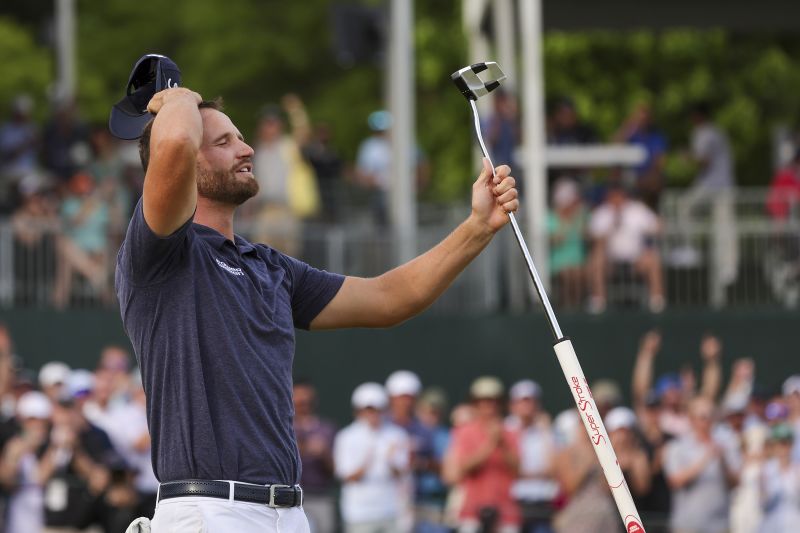
The manner of victory was the stuff of dreams too, as Clark carded 19-under to seal a four-shot victory over compatriot Xander Schauffele, ranked 75 places above him at world No. 5. It marked the second-lowest score in relation to par in the event’s history, second only to Rory McIlroy’s 21-under in 2015, according to the PGA Tour.
McIlroy, making his first start since missing the cut at The Masters, finished 31st in a star-studded field featuring six of the world’s top 10.
A final round three-under 68 sealed the 29-year-old Clark’s fourth consecutive round in the 60’s, a composed closer after a scintillating 63 on Saturday had given him a two-shot lead over Schauffele heading into the closing round.
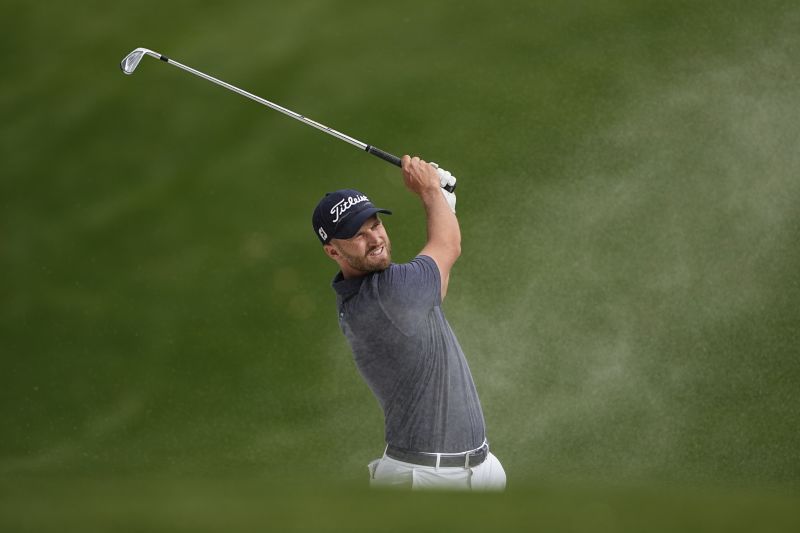
Having turned pro in 2017, Clark was five years and 133 PGA Tour starts without a win. After finishing sixth at the Corales Puntacana Championship in the Dominican Republic in March, the American began to think that he might never taste victory.
“I know that sounds crazy because I’ve only been out here five years, but I had a lot of chances to where I was within two or three shots either going into the back nine or starting on a Sunday and I always seem to fall short, and not only that, but seem like I fell back in positions,” Clark admitted.
“There was multiple texts and calls and times when I was so frustrated with people in my camp where I didn’t think I would ever win and I was like, ‘Let’s just stop talking about it,’ because I didn’t want to think about it. I said maybe that’s just not in the cards for me.
“So being in the position this time, I was like, ‘Well, we know what not to do.’”
Those lessons were tested immediately Sunday, as Clark opened with a bogey and remained at one-over approaching the eighth tee. However, a subsequent birdie, followed by four more across the first six holes of the back nine, saw him cruise home.
When he rolled home his closing bogey, Clark looked overcome with emotion. After embracing his caddie and Schauffele, he looked to be holding back tears as he saluted the crowd gathered at the 18th.
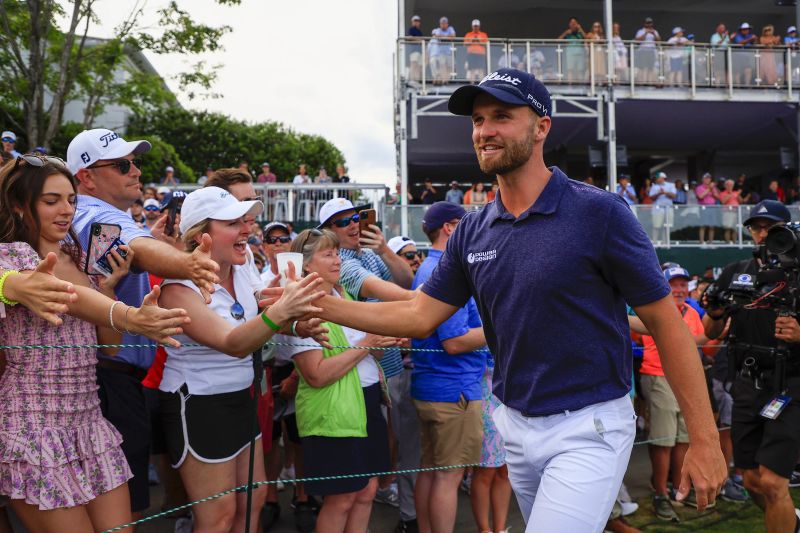
Victory secured Clark the $3.6 million winner’s prize – dwarfing his previous-best payday of $485,000 – and stamped his ticket to the 151st Open Championship at Royal Liverpool in July. It also saw his world ranking soar 49 places to No. 31.
It fulfilled a dream that almost never got off the ground. When a 19-year-old Clark was establishing himself as a talented player at Oklahoma State University, his mother died of breast cancer.
Clark lost his “rock” and seriously considered walking away from the sport entirely.
“I was playing terribly,” Clark recalled. “There’s many times when I stormed off the golf course in qualifying or in tournaments and just drove as fast as I could, I didn’t know where I was going.
“The pressure of golf and then not having my mom there and someone that I could call was really tough for me. Then professionally, I’ve had multiple moments like that where you just, you miss multiple cuts in a row or you feel like your game is good and you’re not getting much out of it and you just contemplate doing it [walking away].
“Max Homa has a great quote: ‘Every golfer’s one shot away from thinking they can win the Masters or one shot away from quitting golf.’ It really is a great quote because that’s the truth. I’m glad I stuck it out and am here now.”
Don't Miss
CNN — It is said that a Grandma knows best. Scottie Scheffler, newly crowned The Players Championship winner, would agree
Unlimited 2% cash rewards — Cardholders earn an unlimited 2% cash rewards on purchases, with no categories to activate or earnings
CNN — Rory McIlroy became the first golfer to lift the FedEx Cup three times after completing a sensational comeback
CNN
—
Golf fans are accustomed to hearing a curling putt described as ‘snaking.’ What they are less familiar with, though, is the sight of a snake dangling off the end of a club.
During the Wells Fargo Championship at Quail Hollow on Saturday, Rickie Fowler was on hand to provide a safe demonstration.
Fowler was on the par-five seventh hole of his third round at the PGA Tour event in Charlotte, when his tee shot went careening right towards the waters along the side of the fairway.
While searching for his ball, the American spotted a snake settled amongst some rocks. North Carolina is home to a range of snake species, many of which inhabit the waters of the Tar Heel state. Comments on the PGA’s Twitter post wavered on what species of snake Fowler handled, but it is thought to be a northern watersnake, a nonvenomous species native to North America.
Angling his wedge, Fowler gently hooked the snake to lift it out from between a gap in the rocks before it slithered away. The fact that the 34-year-old is a long-time partner with Puma-Cobra made it a fitting collaboration.
He eventually took a penalty drop but managed to save par, carding a three-under 68 before repeating the score on Sunday to finish tied for 14th at eight-under overall, 11 shots behind champion Wyndham Clark.
It lifts him three places to world No. 50 ahead of the PGA Championship later at Oak Hill this month, where he will again chase a first career major after three runner-up finishes.
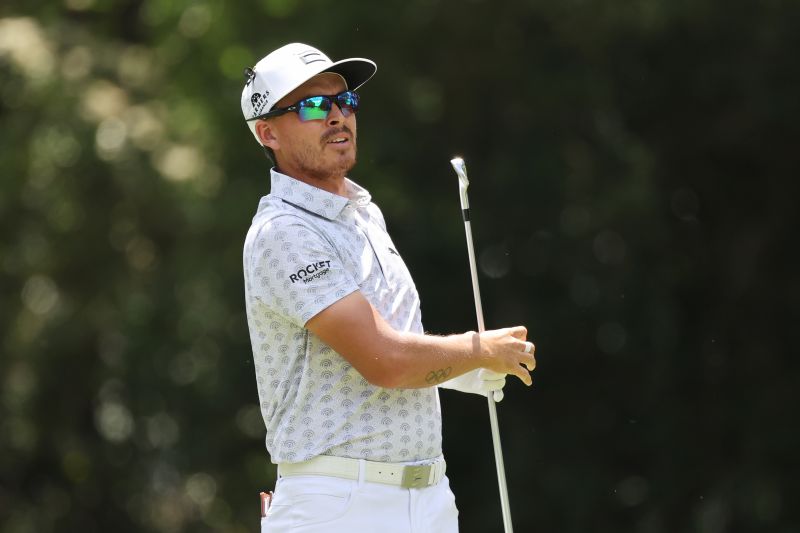
Fowler will be hoping to avoid the fate that befell Richard Brand at last year’s event. The English golfer’s second round was derailed when a squirrel raced onto the green to stop his ball and roll it around before scampering away.
To rub salt into the wounds, Bland was not allowed to move his ball or replay his shot under US Golf Association rulings.
Snakes and squirrels have continued golf’s ever growing story of animal run-ins, with dogs, deer, and alligators all penning chapters in recent years.
Don't Miss
Editor’s Note: Monthly Ticket is a CNN Travel series that spotlights some of the most fascinating topics in the travel
CNN — Neil Diamond sang “Sweet Caroline” at the Broadway opening of his musical” A Beautiful Noise,” five years after
Editor’s Note: All-new episodes of “Stanley Tucci: Searching for Italy” air 9 p.m. ET Sundays only on CNN. Missed a

CNN
—
When 19-year-old South Korean prodigy Inbee Park lifted the first of her seven major championships at the 2008 US Women’s Open, she became the tournament’s youngest ever champion.
Bella Simões would not be born for around another six years. On Tuesday, she attempted to qualify for the major.
At nine years old, the Brazilian is the youngest player ever to attempt qualification to the tournament, set to tee off at California’s acclaimed Pebble Beach course for the first time in its 78-year history in July.
Simões hit the very first shot of her qualifying group at The Club at Mediterra in Naples, Florida. An impeccable swing technique – posted to the USGA’s Twitter account – drew plenty of plaudits.
Yet that should come as no surprise given Simões’ already-impressive résumé. A US Kids Golf World champion for the under-seven’s category in 2020, she defended her title a year later before clinching another victory in the eight-year-olds competition in 2022.
It’s a youth tournament with pedigree: World No. 7 and 2014 Chevron Championship winner Lexi Thompson was twice a champion before she became one of the game’s elite players.
Thompson became the youngest golfer ever to qualify for the US Women’s Open when she – at 12 years old – made it to the 2007 edition of the major.
Golf’s greatest-ever prodigies
Simões still has a few attempts left to usurp that title but will have to wait at least another year after finishing tied-59th in the 67-player field. The Brazilian shot 23-over par, as two players – Lindy Duncan and Brooke Matthews – secured automatic qualification with scores of 10-under and 8-under respectively.
The USGA announced a record number of entries for July’s championship, with 2,107 applicants from 47 US states and 62 countries dwarfing the previous record of 1,874 set last year, when Minjee Lee went on to clinch victory at Pine Needles.
Players must have a handicap index of 2.4 or below, or be a professional, to attempt qualification. Several groups are exempt and receive an automatic invitation, including the last 10 champions and the top 75 players in the world rankings.
Kimberly Williams, a 60-year-old pro from Bethesda, Maryland, was the oldest player to attempt qualification this year, according to the USGA.
Don't Miss
CNN — Novak Djokovic cruised through to the US Open final after a dominant 6-3 6-2 7-6 (7-4) win against
CNN — Here’s a look at the Australian Open, one of four competitions that make up the “Grand Slam” in
CNN — Novak Djokovic won the US Open on Sunday, defeating Daniil Medvedev 6-3 7-6 (7-5) 6-3 in the men’s
CNN
—
It is said that a Grandma knows best. Scottie Scheffler, newly crowned The Players Championship winner, would agree wholeheartedly.
Scheffler’s grandmother, Mary, could not have chosen a better week to follow her grandson around all 72 holes of a tournament.
A dominant victory sealed a dream Sunday for Scheffler at TPC Sawgrass in Florida, reclaiming his World No. 1 spot from Jon Rahm and securing him a $4.5 million cut of a record $25 million prize purse.
The 26-year-old American finished five strokes ahead of England’s Tyrrell Hatton, the largest margin of victory at the event dubbed “the fifth major” since Stephen Ames cruised to a six shot win in 2006.
It marks a sixth PGA Tour victory in a remarkable 13 month stretch for the reigning Masters champion, one made even sweeter by having many of his family watching on from the sidelines. And a number were gathered at the final green to embrace the new champion; wife Meredith, Mother, Father, and, of course, Grandmother.
The 88-year-old had made the 20-minute trip from her home in Florida to follow the progress of her grandson, with social media footage showing her walking between holes.
“It’s pretty impressive she’s walking so many holes out here, she’s a trooper,” Scheffler told reporters.
“I really don’t know what to say. She’s had a rough last year with Grandpa passing away, and we have an uncle that’s pretty sick, and I’m just happy that we’re able to kind of enjoy all this together.”
Though her duties weren’t done for the day, according to Scheffler when asked how he would be celebrating.
“Maybe Grandma’s got some food at home,” he added.
“I know she has some dessert. We’ll see what’s in store.”
Scheffler didn’t do his grandmother any favors with the furious pace he set around TPC Sawgrass across the week.
After starting Sunday’s final round with a two stroke lead over Australia’s Min Woo Lee, the American tore away from the field with a run of five straight birdies from the eighth hole. A bogey at the 14th provided a scare, but Scheffler eased home with four straight birdies to shoot three-under 69 for the round, and 17-under overall.
Even a historic finish from Hatton wasn’t enough to get close to Scheffler’s score. The 31-year-old, chasing his second PGA Tour victory after winning the Arnold Palmer Invitational in 2020, shot a blistering seven birdies across the back nine – including the final five holes – to card a seven-under 65.
In doing so the Englishman tied the tournament record for a low back-nine score, 29, at TPC Sawgrass, according to the PGA Tour. Having begun the day in 26th place, his late flourish secured him $2.725 million in runner-up prize money, with Viktor Hovland and Tom Hoge finishing two shots behind.
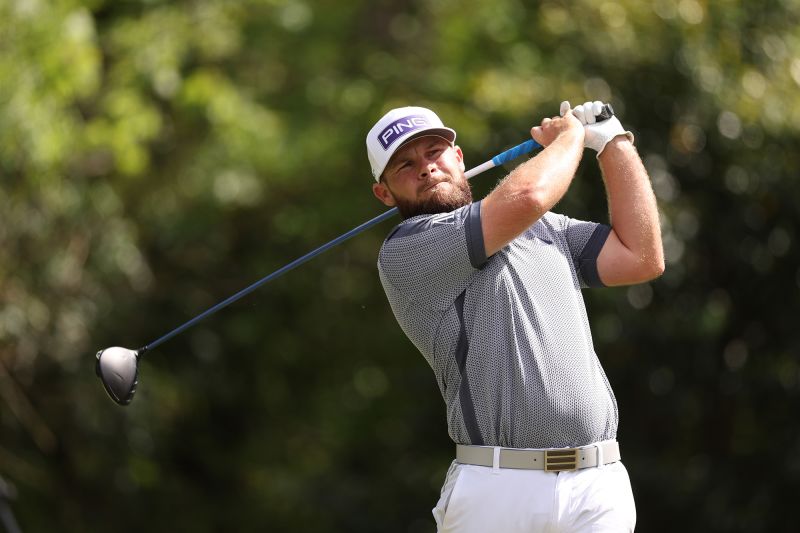
Scheffler also made history. After his maiden major triumph at Augusta last year, he becomes just the third player to hold both The Masters and The Players Championship titles simultaneously after Jack Nicklaus and Tiger Woods.
With 33 majors and five Players Championships between them, the pair make for illustrious company.
“Quite a special group of people. We could add all our majors and Players together and I have two now and they have a lot more than that,” said Scheffler, laughing.
“Any time you can get mentioned in the same breath as Tiger and Jack it’s very special. I’m very grateful for that.”

The victory continues Scheffler’s excellent start to 2023, and his second win after he defended his title at the WM Phoenix Open in February.
That triumph had seen Scheffler reclaim world No. 1 spot from Rory McIlroy, only for Rahm to leapfrog the American a week later with victory – already his third of the year – at the Genesis Invitational.
Yet the Spaniard’s hopes of a fourth were dashed early on at TPC Sawgrass, as he withdrew following Thursday’s first round citing illness having opened with a one-under 71.
Meanwhile, McIlroy endured an uncharacteristically torrid weekend, shooting 76 and 73 en route to missing the cut at a PGA Tour event for the first time since FedEx St. Jude Championship in August 2022.
For the new world No. 1, attention now turns to whether he can defend his green jacket at Augusta next month.
“I’m just comfortable with where my game is,” Scheffler said.
“I feel like I’m improving. I’m definitely learning more and the more you can get into contention and be in the moments. I would say that’s probably the most valuable thing is knowing what you feel like and being able to prepare for it.
“Going into the Masters, it’s going to be a fun week. Champions Dinner, there’s going to be a lot of fun stuff that I get to do that week, but by the time we tee it up Thursday everybody starts at even par so it probably doesn’t have much of an effect.”
Don't Miss
CNN — Walking up the final fairway at Quail Hollow on Sunday, victory all but assured, Wyndham Clark made a
CNN — Rory McIlroy became the first golfer to lift the FedEx Cup three times after completing a sensational comeback
The Irishman pipped close friend Rory McIlroy and Jon Rahm by a single stroke at Wentworth to claim his first

CNN
—
Tiger Woods could form part of the US Ryder Cup team – or at least, Zach Johnson isn’t ruling it out.
Ahead of the Sony Open in Hawaii, US captain Johnson said he wouldn’t discount selecting Woods to compete in the tournament if the 47-year-old didn’t qualify for the team automatically.
“I would only contemplate having him on the team if he felt – if he was putting up some numbers and some scores, No. 1, where he’s showing some sign of being competitive, “Johnson said at a media conference on Wednesday.
“And then No. 2, that discussion would be had with the other guys that are a part of that team, and specifically him. If there is anything I trust in Tiger Woods, is that he’s extremely invested in this team and the future Cups. Extremely invested. I can’t speak that enough,” added Johnson.
“And then I think you would do anything and everything for the betterment of the team. I assume he would say … I don’t like basing on assumptions … but I’m confident that he would say, ‘Yeah, I can play, or no, I can’t.’”
Last year, Johnson confirmed Woods would be part of the US Ryder Cup “in some capacity,” adding that Woods had made it a “priority.”
“Given who he is and what he’s all about, I can’t tell you right now: I don’t know if he will be here next year, but he will be a part of this team in some capacity,” Johnson said.
However, Woods’ health could complicate this, Johnson conceded.
“He’s gone through some things as of late that make it difficult, whether it’s travel or what-have-you,” said the US Ryder Cup captain.
Injury has hampered Woods’ recent career, his playing time decimated since he suffered serious leg injuries in a car accident in February 2021.
The 47-year-old withdrew from the Hero World Challenge in December citing his foot pain, and at various points had looked to be struggling with movement during the seventh edition of The Match that month.
“I think something that is realistic is playing the tour one day, never full time, ever again, but pick and choose, just like Mr. (Ben) Hogan did,” Woods told Golf Digest after his accident in 2021.
“Pick and choose a few events a year and you play around that. You practice around that, and you gear yourself up for that. And you play. I think that’s how I’m going to have to play it from now on.
“It’s an unfortunate reality, but it’s my reality. And I understand it, and I accept it.”
A biennial competition which alternates between Europe and the US, the Ryder Cup is being played in Italy for the first time later this year – September 25 to October 1 – at the Marco Simone Golf & Country Club, which is 10 miles from the center of Rome.
Team US regained the Ryder Cup in 2021 following a historically dominant performance over Europe at Whistling Straits.
Don't Miss
“What they did was so illegal, at a level that you’ve rarely seen before,” Trump said in November 2021. “Now,









